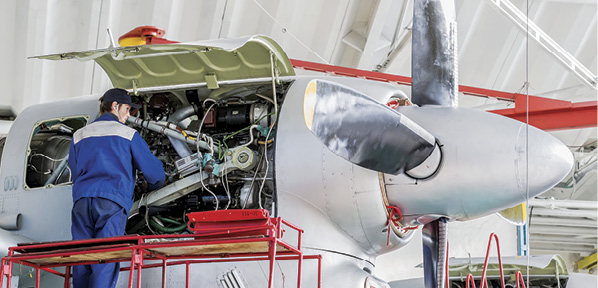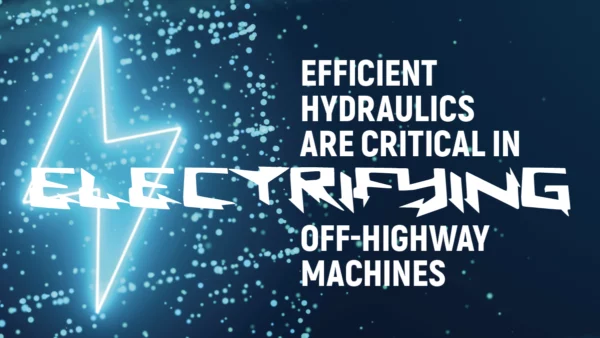Why You Should Bleed Hydraulic Cylinders
By Emily Newton, Editor-in-Chief, Revolutionized.
Taking the time to bleed air from hydraulic cylinders significantly improves system safety and performance. Air and debris buildup in hydraulic systems degrades components and increases the risk of malfunctions and damage. Bleeding air and addressing leaks in hydraulic cylinders helps prevent such issues. Here’s an overview of the process plus some tips and best practices.
Bleeding air from hydraulic cylinders is vital to ensure fluid power systems function properly and safely. Hydraulic systems aren’t meant to pressurize air; they’re designed to work with pressurized fluid. Air that gets into fluid or hydraulic cylinders can dramatically shift how the cylinder works. Air in hydraulic cylinders heats when compressed. Any amount can spark a chain reaction of potentially dangerous effects. The warm compressed air can dry out lubrication, burn seals, and initiate cavitation, leading to metal components’ erosion. Air can even cause hydraulic cylinders to explode if the it mixes with oil in a process known as dieseling.
Air also causes potentially hazardous malfunctions. Fluid power systems are designed under the assumption that pressurized liquid behaves in a certain way. However, air acts differently than liquid. When air bubbles accumulate in hydraulic cylinders, they act like speed bumps on a road, breaking up otherwise smooth fluid behavior.
This is why bleeding air in hydraulic cylinders is an important everyday process. The brakes in many modern vehicles use fluid hydraulics. Air in a hydraulic braking system makes it less precise and responsive, creating a safety risk. Knowing how to bleed air from hydraulic cylinders for various purposes, from power system maintenance to everyday brake performance in cars and trucks is vital.
Bleeding hydraulic systems
Every fluid power system has specific air-bleeding needs. However, most hydraulic cylinders use the popular syringe construction, which includes a plunger that applies pressure inside. Syringe hydraulic cylinders usually have a built-in bleeder valve and fitting, often using standardized sizing for an industry, such as auto or aviation. The valve and fitting connect a bleeder tube. The cylinder pressurizes, and the fluid inside flushes out air and unwanted debris. If air has dissolved in the hydraulic fluid, users may need to apply heat first to separate it.
Bleeding requires clean fluid that matches the type and capacity of the hydraulic system. You need a tube matching the size of the cylinder’s bleeder fitting. You’ll also need wrenches and a tank with a pressurized pump for the clean fluid.
The bleeding process involves flushing old fluid that contains air and debris while keeping the cylinder pressurized. Auto mechanics and technicians often use this method to clean hydraulic systems in cars. The external tank of matching fluid is filled as needed and pressurized. Connected to the hydraulic system, the clean pressurized fluid pumps through the cylinder or reservoir, forcing out the air, debris, and old fluid through the bleeder tube.
Users often bleed as part of a standard maintenance process for hydraulic cylinders. Usually, it is after disassembling components that may get in the way. Bleeding hydraulic cylinders can be part of cleaning processes that remove built-up oil or grime.
Inspect hydraulic systems before and after bleeding. Sometimes underlying issues cause excess air in cylinders. If not resolved, the cylinders only worsen and necessitate more frequent bleeding. An untreated mechanical malfunction or air leak can damage the whole system. Remember to diagnose and address excess air when cleaning or bleeding hydraulic cylinders.
Tips for bleeding hydraulic cylinders
Bleeding air from hydraulic cylinders is fairly straightforward, but some tips and best practices can make it even smoother. For example, it is important to doublecheck the fluid capacity for a given hydraulic system. Standard sizes are often used, but it’s always a good idea to check and ensure enough clean fluid is on hand.
Be sure to confirm the fluid type when checking capacity. Fresh fluid pumped into a hydraulic system should be clean and match the system’s specs. This is where hydraulic fluid cleanliness standards come into play. Old or reused fluid is not good for flushing, bleeding, or refilling hydraulic cylinders during maintenance because it is often contaminated with debris and not clean enough for safe operation. If reusing old fluid is the only option, however, use a fine mesh filter to strain out debris.
Additionally, when using the standard pressure bleeding method, the cylinder or reservoir should remain pressurized the entire time. Otherwise, air could leak and build up to replace the lack of adequate fluid. It also helps to start an air bleed at the line furthest from the hydraulic pump and work inward, rather than the other way around.
The most common and often obvious telltale signs that a hydraulic system needs an air bleed are noises. Air trapped in a cylinder can result in banging noises, like the sound of knocking on a door or popping a balloon.
Bleeding air from hydraulic cylinders is crucial for ensuring a system operates at its best. Air bleeds are necessary for proper maintenance and help keep the system running well for as long as possible. In fact, regularly conducting air bleeds can improve safety and performance. Air bleeding is vital for system health and operational performance, from consumer car brake systems to industrial fluid power systems.
Emily Newton is Editor-in-Chief of Revolutionized, an online magazine covering technologies advancing the industrial sector. For more information, visit https://revolutionized.com/.








Thanks for sharing such an informative article.Are you facing electronics problems? Our company is fortunate to have experts in Washing machines, Microwave Oven Repair in Ernakulam, and we use genuine parts. Our asset is our happy customer base. Our technicians are fully trained professionals and provide repair services you can rely on! You can expect a total quality and value-added service.